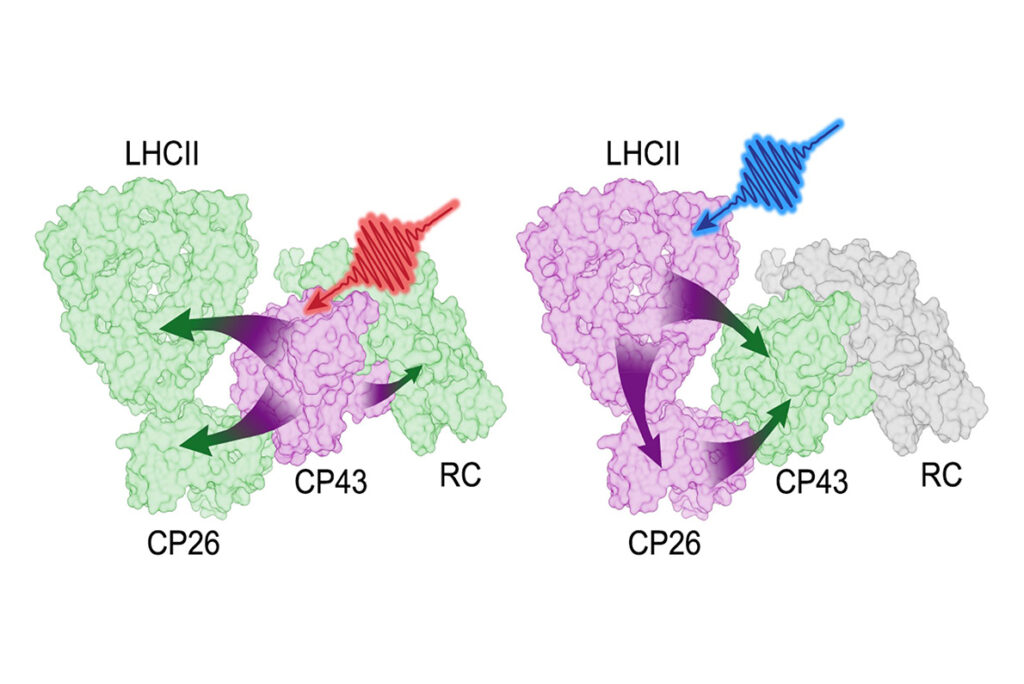The photosystem II supercomplex (PSII)—found in plants, algae, and cyanobacteria—is the only system in nature able to perform the tricky task of splitting water into oxygen and hydrogen using sunlight, a foundational step for both breathable oxygen and the food chain. PSII can both harvest sunlight efficiently and protect itself from damage, qualities scientists would love to replicate in synthetic light-harvesting devices such as photocatalysts and fuel-producing artificial photosynthesis systems. In addition, by understanding and possibly mimicking PSII’s balancing act, scientists could engineer crops that recover faster from light stress, boosting yields.
“Photosystem II doesn’t just collect sunlight—it makes incredibly smart decisions about what to do with that energy,” said Graham Fleming, senior faculty scientist in Berkeley Lab’s Molecular Biophysics and Integrated Bioimaging Division and corresponding author on the four research papers. “What we’ve uncovered is how nature balances two contradictory goals: getting the most from every photon while also protecting itself from too much light.”

To explore how energy moves through this complex system, Fleming’s team at Berkeley Lab utilized recent innovations in spectroscopy and advanced modeling techniques. One of their key tools, described in study in the Journal of Physical Chemistry B, is two-dimensional electronic-vibrational spectroscopy—a method developed by Fleming that provides high-resolution insights into where energy is going in a sea of nearly identical chlorophyll molecules.
In a study in Nature Communications, the Berkeley Lab research team worked with colleagues at the University of Cambridge in England to build simulations of PSII’s energy landscape. These simulations helped explain why the system’s flat design supports fast energy spreading and offers built-in safeguards to prevent overheating.
The researchers reported in a Proceedings of the National Academy of Sciences paper that energy in PSII doesn’t take a direct route to the reaction centers; sometimes it flows away from them before circling back. This “wandering phase” turns out to be essential as it gives the system time to assess light intensity and avoid creating harmful byproducts.
The final piece of the puzzle, reported in The Journal of Chemical Physics, was a first-ever measurement of the distance energy can travel within PSII—known as the exciton diffusion length. Using a technique called exciton–exciton annihilation, the team found that energy can travel across the entire complex and even between its two reaction centers, granting the system even more adaptability.
All of this has major implications for building smarter light-harvesting systems and engineering more resilient crops for higher yields.




